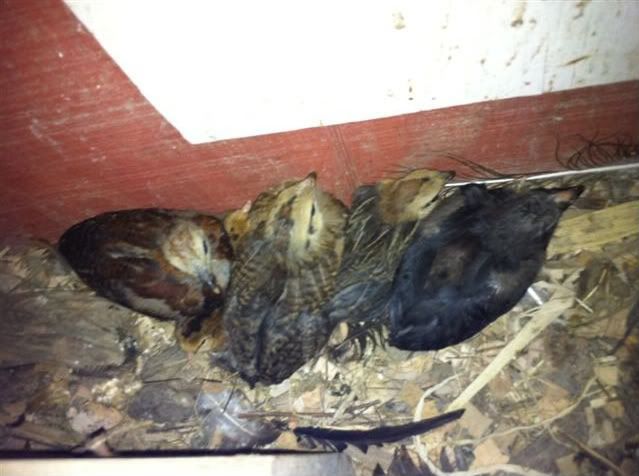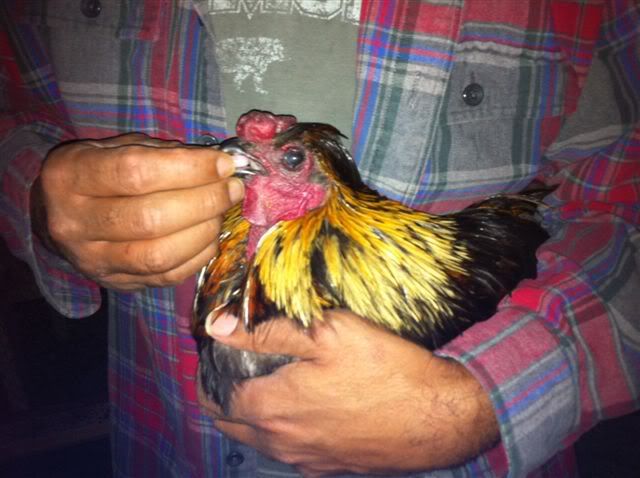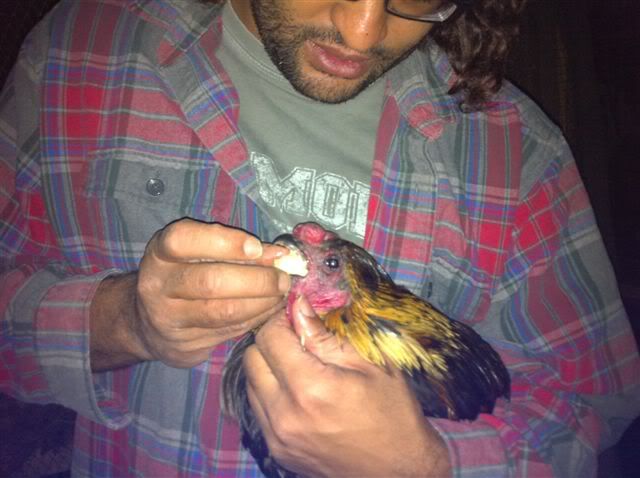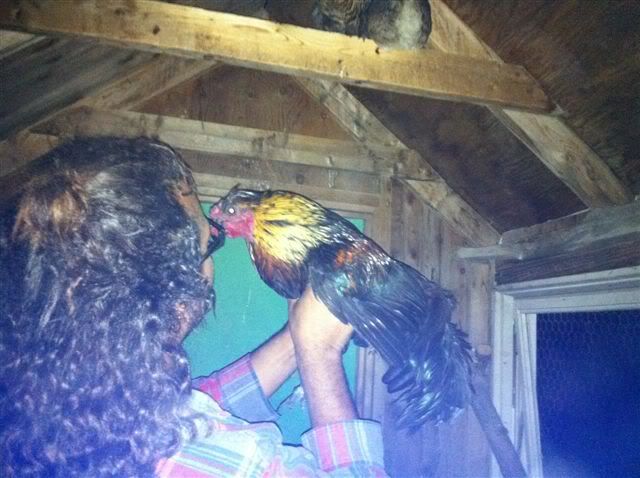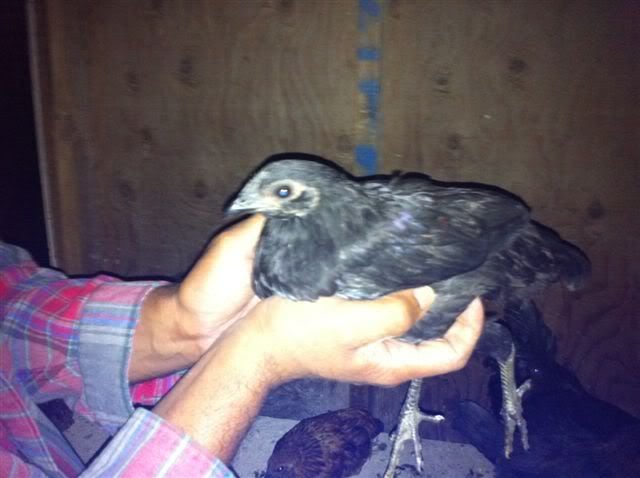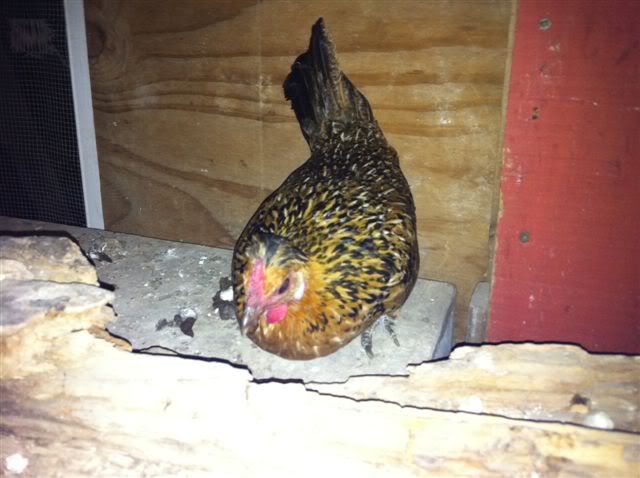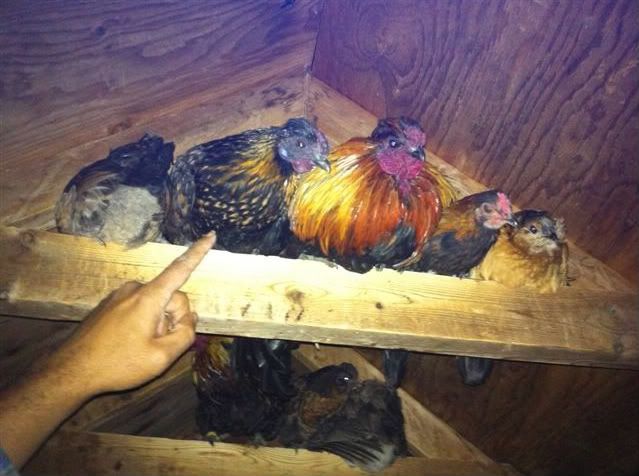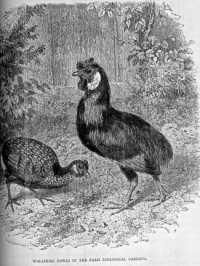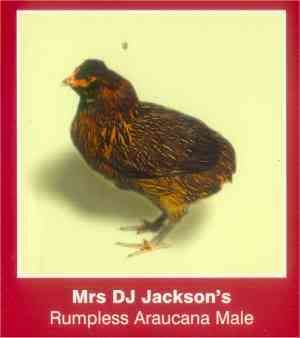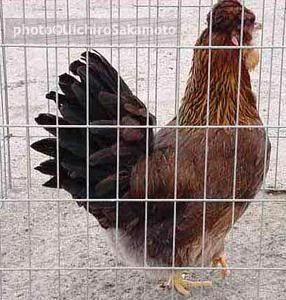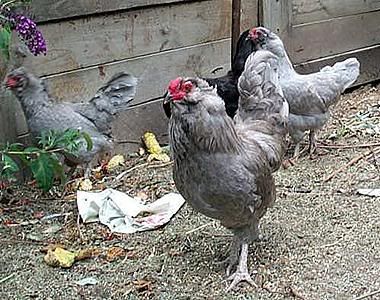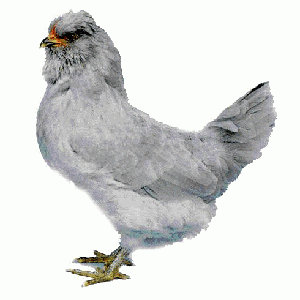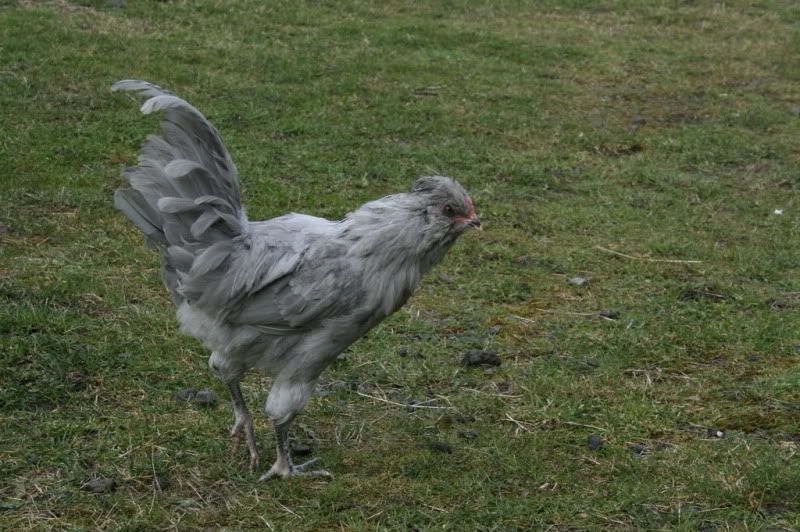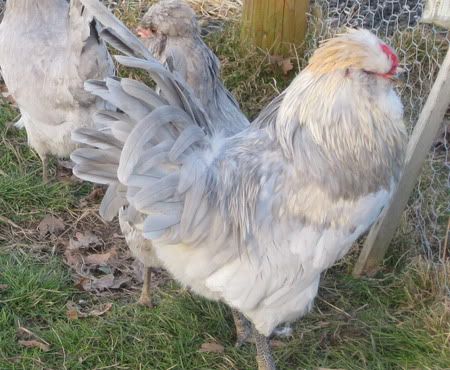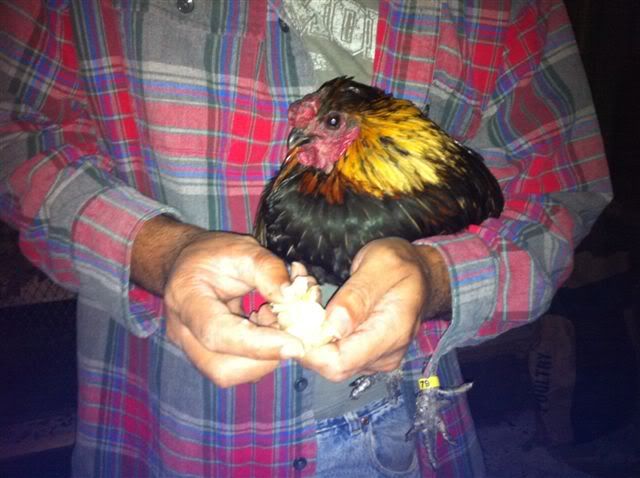Mapuche Huastec; Rapa Nui; and Pehuen fowl.
mmaddie's mom :
What kind is the very golden hen?
He is both Huapi and Ona a composite between two old breeds from the southern portion of the continent of South America.
This particular line also has Koro Sea Junglefowl in its genes. This is not of much consequence as the Koro Sea Junglefowl is one of the primary progenitors of the Huapi as well as the Quechua. It is a minor ancestor of Shehuen, which appears to be descended of the Raraku (Pukao) Rapa Nui fowl which is essentially similar to the Olmec Fowl of Ecuador and the Shehuen of Argentina.
If it is crested and has a single gular lappet it has Koro Sea Junglefowl or Ponape Junglefowl in its lineage.
Henny feathering is very common in Huapi and even more in the Ona which tend also to be lacking a tail and exhibiting a minute crest.
This illustration depicts the first chickens of the "New World" ( how do you "discover" a continent with over 12 million people living on it anyway?).
Note the comb and wattle- these birds are akin to Koro Sea Junglefowl but exhibit the tailess trait of the Ona and the Colloncas.
This bird is the product of selective breeding but logically it included Ona because the type specimens collected early on were essentially identical to this henny rooster.
This Jitokkoh is an old Japanese breed that the Nikkei population brought to South America with them early in the 19th century. It may well be that the Jitokkoh shared a common ancestor with the Ona and as both probably had their origin in archipelago somewhere near Marquesas. It should not be suprising to people that Pacific Islanders related to the Ainu people of Japan ( original inhabitants of Japan) received the sweet potato and topknot chickens very early on in history.
It complicates things a bit that the Japanese immigrants of South America that arrived i Believe at some point in the 1800's carried the Jitokkoh ( once a common old breed of Japan most commonly kept by rural farmers and fishermen as well as other breed strains- some white in colour.
A white Mapuche is generallt referred to as a Nikkei or Snowy Nikkei if it has a velvet ruff beneath its eyes and dense velvet plumuelles covering its throat and upper neck.
The Nikkei influence is obvious in many strains of Mapuche chickens.
The Lavendar UK Araucana are essentially similar to the Huapi and Koro Sea morphotypes.
Again, selective breeding has generated the birds we are looking at but their origins are South America and the most important genes accrued by the birds
responsible for their unique weather insulation facial ruffs and dense velvety throat plumage is uniquely South American- well- its also shared in certain ancient breeds from Indonesia all the way to the Koro Sea and into Easter Island to the South and Japan to the north.
These UK Araucana with crests are essentially similar to the Shehuen, which in turn is one of the important progenitors of the Mapuche races including the Mapuche Huastec.
Mapuche Huastec are from the Ecuador region but were originally from Mosquito Coast, not incidentally, also the region where the Muscovy ( bad derivation of Miskito as in Miskito Indians of the Miskito Coast) Duck was first domesticated and refined.
